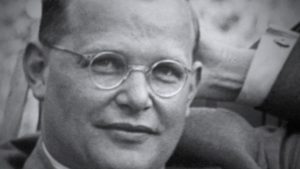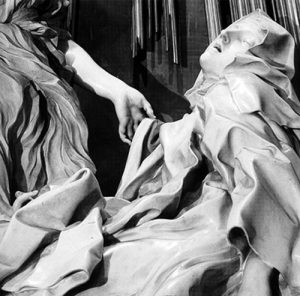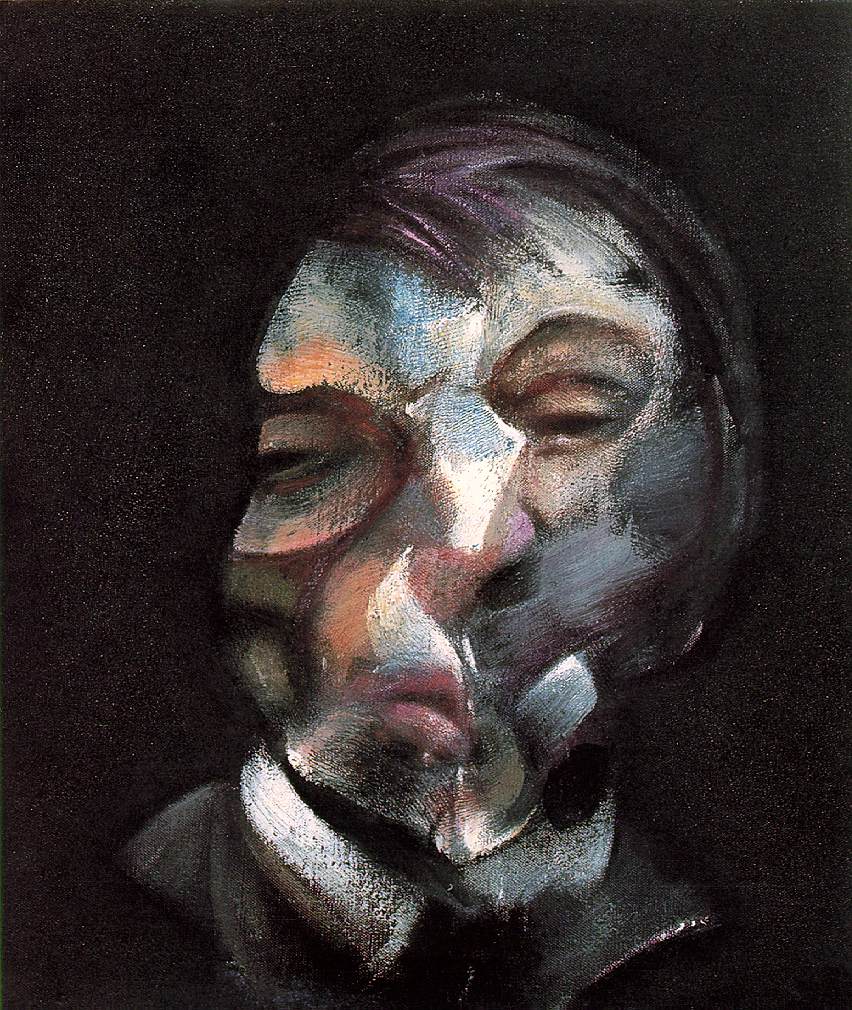The following is the second half of the article. The first installment can be found here.
Theopoetics II: The Difference between Technology and Logotechny
Richard Kearney’s theopoetics offers an alternative to the techno-theo-logical alliance between the divine machine and the mechanical god as outlined so far. His hermeneutical reading of the scriptural text pays close attention to a different “making,” that of poiesis, exemplified by poetry, human and divine. “Theopoetics,” he claims at the outset of his essay, “names the notion that the divine (theos) manifests itself as creative making (poiesis).”[1]
By focusing on those scriptural passages from Genesis, Proverbs, and the Wisdom of Solomon, among others, in which divine creation is best understood not in terms of manufacture but rather as an artwork, Kearney effects a reversal of crucial implications for theology. His interpretation of divine creation moves away from the logos about technē (techno-logy) in favor of a technē of logos; from the subordination of language to production to a production in service of language. I borrow the term logotechny from the Greek in order to signify the reversal of the technological.
In Greek logotechnia means simply “literature” and it denotes any literary work, such as poetry, novel, theater, and so on. The three examples of “theopoetic art” analyzed by Kearney in his essay (Rublev’s Holy Trinity, Da Messina’s Annunciata, and Gallagher’s Pneuma Hostis) offer us a clear statement as to how Kearney understands theology’s true vocation—which is, at the same time, theology’s provocation—to retrieve and rethink (the anatheistic challenge[2]) God’s relation to humanity and humanity’s relation to God as an art beyond the artisan. In his concluding words:
Why do we need art to recover God after God? Why look to poetry and painting rather than doctrine and theology? Why is Creation a matter of making as well as revealing? Because, we believe, poetics is the first bridge between word and flesh.[3]
My task in this essay is to sketch the theological presuppositions that make theopoetics possible. To this effect, I propose three ideas closely interrelated: nothingness, freedom, and desire. This conceptual trinity is, like the Holy Trinity, a unity—for all three are unified by the notion of creation: “In the beginning God created the heaven and the earth” (Gen. 1:1)
We began this response with a philosophical exegesis of the concept of nature (physis). That was a necessary task, even though its purpose was not clear then. It was a necessary task as it shall now allow us to contrast and juxtapose nature to creation. Nature is not creation. The Scriptural idea of creation underscores the world’s contingency, for there was a time that the world did not exist nor had to exist. There was a time that time was not.
Furthermore, the creation of the world “in the beginning” (Gen. 1:1) dispels any illusions of eternity and allows for the mystery of time and history to be re-evaluated and vindicated. And because, unlike nature, creation is neither eternal nor divine, it can now be known (hence the inception of modern science). The following anecdote from one of Lacan’s seminars provides us with further corroboration:
I remember that one evening when I was dining at the home of a descendant of one of those royal bankers who welcomed Heinrich Heine to Paris just over a century ago, I astonished him by telling him—he remains astonished up to this day, and is still clearly not ready to get over it—that modern science, the kind that was born with Galileo, could only have developed out of biblical or Judaic ideology, and not out of ancient philosophy or the Aristotelian tradition.[4]
At the same time, creation, precisely by its beginning, cannot be anything else than a creation in freedom and out of freedom. Freedom is first and foremost exemplified in creation’s gratuitousness. The ex nihilo of the creation—the world as created as much as the creative act by which “[t]here is no possible question that could go back behind this God who created in the beginning…No question can go back behind the creating god, because one cannot go back behind the beginning.”[5] That is because, according to Bonhoeffer, the beginning “is completely free.”
In other words the Creator—in freedom!—creates the creature. The connection between them is conditioned by nothing except freedom, which means that it is unconditioned.[6]
In this assertion, Bonhoeffer follows the Patristic tradition of the Church for which the creation of the
world was always unconditioned and ungrounded, precisely in order to safeguard the freedom of God’s creative act. Every compromise on this score, usually erring on the side of Platonism (cf., Origen, Schelling) meant
…that God was a creator by necessity and not freely. Without creating the world God would remain unfulfilled, he would not be God. The notion of God and the notion of creation thus overlap, and paganism makes its appearance disguised under the form of Christian doctrine.[7]
It is precisely this kind of disguise that one encounters, for example, in Schelling’s positing of an eternal

yearning or craving (Sehnsucht) in God that necessitates God’s self-manifestation in the “creation” of the world.[8] Going further than the ontological necessity, Schelling does not hesitate to speculate the world’s becoming as “morally necessary” (eine sittlich-notwendige Tat).[9]
Since creation in general, that is both the world and humanity, was not necessary, nor determined by any hidden necessity for God, but came about as an act of His freedom, they too are participants in that gift. That means that creation (and every human being along with it) is free to become themselves. “The manner in which what something is (given/gift, being/eternal being) emerges from how something is (well-being/bad-being).”[10]
What we have here is a revolutionary idea that breaks with the essentialism of classical philosophy, and particularly of Neo-Platonism, and anticipates by some ten centuries the existentialist primacy of existence (the how) over essence (the what). The primacy of existence and existents—be they He who exists superabundantly as the principle of existence or those who exist (literally, ek-sist) as derivative beings—avoids and indeed transforms the anonymity of being (what Levinas has called the il y a). Existence is made personal.
This has an epistemological consequence: essence (the what, quid est, quiddity) can be known only through an existent (in Maximus the Confessor’s vocabulary, the tropos of hypostatic being). Here the ground is prepared for the famous Kierkegaardian principle of the incarnation that reverses the classical hierarchy by ranking the particular higher than the universal and affords to the particular an infinite value—indeed the value of infinity. It can indeed be expected as a matter of course that wherever the ex nihilo of creation is not properly thematized, then an essentialist metaphysics are in order. Christian theologians (from Maximus the Confessor to Eriugena to Kierkegaard) in situating their thought vis-à-vis creation, think constantly of the origin, of the beginning, that is of the nothing—to which, ironically, a theologian is not supposed to have recourse. [11]
Yet, Christian thought is made possible by a constant encounter with this very question: “why there is something rather than nothing?” As Vigilius Haufniensis writes: “The Christian view takes the position that non-being is present everywhere as the nothing from which things were created…”[12] Creation was indeed made of nothing (ex nihilo), but the nothing shows through.
Bonhoeffer forbade us to ask the question “why did God create the world?”—for the why asks after a cause, it expects a be-cause, and if both God’s and the creation’s freedom is to be maintained, then not only this question should remain without an answer but it should not even be posited as a question. Nevertheless, we could perhaps ask a slightly different question: “What kind of God could be the creator God?”
That is, what could creation tell us about a creator God? This question prompts us to add to the two concepts that we have already discussed—namely, freedom and nothingness—a third one: desire. And it is by this third concept that theopoetics becomes, in Kearney’s words, “theoerotics.”
But greater than curiosity is desire. For in forming the human, God bore witness to a gap within divinity, a sabbatical crack or fracture from which the life-drive of eros could emerge as desire for its other. God created because he desired a play mate. Someone to consort with, as we know from Hosea, Isaiah and the Song of Songs. Or as the contemporary Jewish philosopher, Emmanuel Levinas, put it: “Dieu a crée l’homme car on s’amuse mieux à deux.” Creation is a love affair. Theopoetics is theoerotics.[13]
This “gap within divinity,” the chora around which (peri) the perichoretic event takes place, is the core of Trinitarian mystery itself. A God conceived as identical with His substance, as a selfsame ipseity, exclusive of any alterity, that is, a God after the manner of religious monotheism (Judaic or Islamic)[14] or philosophical monism (Parmenidean or Plotinean) leaves the differentiating ground of multiplicity together with space and time unaccountable.
This ultimately means that such a conception of God fails to ground creation. In fact, it would have been impossible to justify the reason and the manner according to which such strictly monotheistic God could create the world to begin with. For Christianity, on the other hand, God can create, that is, God can not only posit the world as His other, as that which is not-God, but He can also posit it as something intrinsically good, precisely because the otherness of the creation is a manifestation ad extra of the otherness in God Himself who exists ecstatically as the perichoretic communion of the enhypostasized difference of the Trinitarian Persons. A substantial God cannot but be as monistic as static. Such a God, however, cannot, by definition, be creative.
Thereby we have already arrived at Kearney’s first visual example of theopoetics: Andrei Rublev’s Holy Trinity. The freedom of a God who is free to exist because He ek-sists, that is, because He “exits” and “stands beyond” Himself; a God who is free from His own being or essence; a freedom indicated by the “gap within divinity,” by the no-thing of the perichoretic chora; finally, a nothing that knows nothing “of that narcissistic self-regard – a self-loving-love, a self-thinking-thought, a self-causing-cause”—all of these motifs (freedom, nothing, eros) are embodied in Kearney’s reading of Rublev’s icon. Didn’t the naturalism of the Greeks know of eros?
 A student of ancient philosophy may object. Doesn’t eros after all belong to physis as what is natural and aiming at the propagation of nature? That eros, what Lyotard has called in his Libidinal Economy “Nicomachean Erotics”[15] is precisely too natural, that is to say, too symmetrical, equally subservient to biological and political needs; it is an economic eros that grants satisfaction inasmuch as it demands it. Ultimately, it is a technological eros, to recall Levinas’ remark that “machines…echo the impatience of desire.”[16] Not so with the eros that freely begets creation.
A student of ancient philosophy may object. Doesn’t eros after all belong to physis as what is natural and aiming at the propagation of nature? That eros, what Lyotard has called in his Libidinal Economy “Nicomachean Erotics”[15] is precisely too natural, that is to say, too symmetrical, equally subservient to biological and political needs; it is an economic eros that grants satisfaction inasmuch as it demands it. Ultimately, it is a technological eros, to recall Levinas’ remark that “machines…echo the impatience of desire.”[16] Not so with the eros that freely begets creation.
In Rublev’s icon the movement of eros is in the eyes: the gaze of each angel “deflects” from the one to the other and to the third in a continuous movement that never comes to a halt. Trinitarian eros is not inscribed within an economy of self-satisfaction but within a community of difference and deferment. Theoerotics is not motivated by might, as the magical machine is, but rather by its perichoretic renouncement. That eros is not a will to power.
I would like to bring these reflections to a close by quoting the words from another meditation on Rublev’s icon of erotic theopoetics:
The created self, made in God’s image, is unmistakeably and irreducibly erotic, and its desirousness is not something to be eradicated. To be as a created subject is to be a locus of desire; it is not a lie to say “I”—unless that “I” is trapped in the terms of functional and symmetrical gratifications, held back from the radical delight in the otherness of the other’s desire that is rooted in the love of the Trinity.[17]
John Panteleimon Manoussakis is Associate Professor of Philosophy, College of the Holy Cross in the United States and Honorary Fellow of the Australian Catholic University, Australia. He is the recipient of a Templeton Foundation grant. He is the author of three books, editor of five volumes and he has published over thirty articles in English, Greek, Russian, Serbian, and Ukrainian. His books include God After Metaphysics: A Theological Aesthetic (Indiana University Press, 2007) and For the Unity of All: Contributions to the Theological Dialogue Between East and West (Cascade Books, 2015).
_________________________________________________________________________
[1] Richard Kearney, “Making God: A Theopoetic Challenge” (unpublished paper, 2017).
[2] Richard Kearney, Anatheism: Returning to God After God (Columbia University Press, 2011).
[3] Ibid.
[4] This story is told in relation to Lacan’s analysis of the creatio ex nihilo in The Ethics of Psychoanalysis: 1959-1960 (The Seminar of Jacques Lacan, Book VII), edited by Jacques-Alain Miller, translated by Dennis Porter (New York and London: Norton, 1992), 122.
[5] Dietrich Bonhoeffer, Creation and Fall (DBWE 3), 31-2.
[6] Ibid., 32.
[7] John D. Zizioulas, The Eucharistic Communion and the World, Luke Ben Tallon (ed.), (New York: Continuum, 2011), p. 158. For Zizioulas too one could “locate the heart of the problem and the crucial difference [between Christianity and Greek philosophy] in the question of whether the world has had a beginning or not” (157, emphasis in the original).
[8] F.W.J. Schelling, Philosophical Investigation into the Essence of Human Freedom, translated by Jeff Love and Johannes Schmidt (Albany: SUNY Press, 2006), p. 28. With good reason, Schelling avoids the term “creation” for the term “procession” (Folge) that further confuses the life of God ad intra as Trinity with his creative work ad extra.
[9] Ibid.,65. Perhaps in his attempt to affirm human freedom, Schelling undermined God’s.
[10] John Gavin (reading John Scottus Eriugena’s Periphyseon V, 63) in A Celtic Christology: The Incarnation according to John Scottus Eriugena (Eugene: Cascade Books, 2014), 93.
[11] At least according to Heidegger, who in his polemical remarks against Christianity assumes that a Christian on account of his or her belief on a creator God is unable to think the primordial nothing, thus a “Christian philosophy is a round square and a misunderstanding.” See, An Introduction to Metaphysics, translated by Ralph Manheim (New Haven: Yale University Press, 1987),7.
[12] Søren Kierkegaard, The Concept of Anxiety, translated by Reidar Thomte (Princeton: Princeton University Press, 1980), 83 (my emphasis).
[13] Richard Kearney, “Making God: A Theopoetic Challenge.”
[14] “If, within God’s identity, there is an Other, who at the same time is the image of the Father and thus the archetype of all that can be created; if, within this identity, there is a Spirit, who is the free, superabundant love of the ‘One’ and of the ‘Other’, then both the otherness of creation, which is modeled on the archetypal otherness within God, and its sheer existence, which it owes to the intradivine liberality, are brought into a positive relationship to God. Such a relationship is beyond the imagination of any non-Christian religion (including Judaism and Islam), for wherever God (even in the person of Yahweh or Allah) can only be the One, it remains impossible to discover any satisfactory explanation of the Other.” Hans urs von Balthasar, Theo-Logic.
[15] Jean-François Lyotard, Libidinal Economy, translated by Iain Hamilton Grant (Bloomington: Indiana University Press, 1993), 155-165.
[16] Emmanuel Levinas, Existence and Existents, translated by Alphonso Lingis (The Hague: Martinus Nijhoff, 1978),91.
[17] Rowan Williams, “The Deflections of Desire: Negative Theology in Trinitarian Disclosure” in Silence and the Word, edited by Oliver Davies and Denys Turner (Cambridge: Cambridge University Press, 2002), 133.




